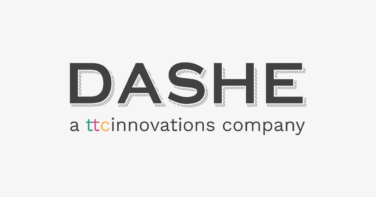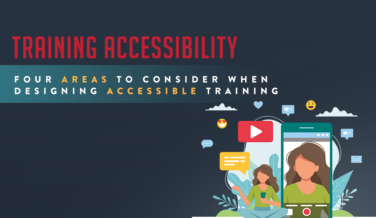Social Learning as Part of Your L&D Strategy
Informal learning and training have been on the rise in organizations across the globe, and social learning has become an increasingly hot topic in L&D departments as more organizations look to leverage the expertise of their subject matter experts (SMEs). But what exactly is social learning, and why is it gaining popularity among organizations and L&D teams everywhere?
What is social learning?
Let me be frank… social learning is not new. Social learning has been around for all of time, as social learning is the continuous process of learning from other people. Yes, it is that simple! Social learning takes places through observation of coworkers, asking questions, and sharing expertise. However, the definition of social learning has begun to reshape itself in recent years when used in the business world. When it comes to L&D, social learning is how we learn from our coworkers, particularly through social platforms like blogs, forums, YouTube videos, and sharing sites such as LinkedIn. Organizations are realizing that supporting social learning throughout their teams has not only fostered more conversations, but also increased collaboration between departments.
What are the benefits of incorporating social learning?
If 2020 taught us anything, it is that there is a lot of room for improvement across organizations with regards to upskilling and the dexterity of employees. Social learning can impact several areas of your organization, from recruiting and onboarding to training, and it enables employees to take responsibility for their own individual learning. Although employee training typically occurs in a formal, classroom setting, things are changing with a large percentage of the workforce still being remote. Furthermore, simply attending training sessions does not guarantee employees are going to retain anything they learn. In our last blog on Performance Support, we mentioned that the retention of learning content drops by at least 70% in the first day if not refreshed or practiced.
That is what is great about social learning… much like performance support, it is done on a just-in-time basis. Whether it is through the use of discussion forums or conversing with fellow colleagues, learners get the information they need, when they need it. Employees can instantly apply the information the learn to complete tasks and achieve goals.
Social learning also supports continuous learning and development. Organizations are constantly looking for ways to bring learning into the flow of work, while also making it continuous throughout career paths. According to a Brandon Hall Group survey, 73% of organizations expect to increase their focus on social learning and more than 60% want their employees to interact with learning resources on a daily basis. The nice thing about social learning is that employees only spend enough time to learn what they need, with minimal disruption to their daily workflow.
Another huge benefit is that social learning enhances the workplace culture and as mentioned above, fosters collaboration throughout the organization. It is human nature for employees to be social with one another and feel like part of a group. Learners that are able to support one another are more likely to feel valued and part of the organization. This will in turn increase employee motivation and lower turnover. People learn by watching, by listening, and by doing: a blended learning approach with hands on, visual, and auditory learning approaches is a great example of social learning.
Social learning is also extremely cost effective. Consider investing in an online training platform with features that encourage social learning. You will allow your employees to learn more organically, and not just during training sessions. Some social features include course ratings, employee comments, content sorting, video sharing, and playlist sharing.
Wondering where to start with social learning?
2020 showed us a strong possibility that traditional classroom training may eventually become obsolete. Most eLearning training programs include a blended learning approach that incorporates traditional instructor-led training as well as digital trainings like microlearning and mLearning. However, as mentioned above, it is human nature for employees to be social with one another, and the social aspect of traditional training needs to be incorporated into the online training experience as well.
Consider some of these tips when implementing social learning into your L&D strategy:
- Get feedback from your employees: The first step in any social learning strategy needs to start within your organization. Figure out whether or not social learning would work well with your current L&D program, and if employees are open to adopting social learning as a training method, and what their skill levels might be. Believe it or not, even in 2021, some people prefer to stay clear of social media.
- Evaluate your current L&D training program and platforms: More than likely, you already have some training in place for your employees. By restructuring your current process, you might be able to lower costs by incorporating social learning. This can be as easy as creating an employee forum or chatroom where they can ask questions and receive feedback.
- Implement social learning platforms into your organization: There are numerous social learning tools and platforms readily available. Some tools such as EdApp (there is even a free version available), have capabilities built in for discussion groups, video, forums, and even gamification. Another popular LMS that has seen a lot of use in the last year is Schoology (works for both schools and organizations in general) where you can record and share videos, create an interactive whiteboard, and conduct video conferencing.
- Allow for positive, and negative, feedback loops: One of the primary reasons that social learning is so effective is because it naturally creates feedback loops between employees and the organization. Take advantage of this opportunity to encourage continuous improvement throughout the entire organization.
Social learning can be fueled by group collaboration projects, group discussions, coaching or mentoring, Q&A sessions, polls or surveys, and conversation exchanges on forums. You will find that there are several ways to implement social learning within your L&D training program, so see what works best for your current program in place and start there.
Utilize Social Learning in Your Organization
Organizations are always looking to improve their training programs. Remember, your best asset is your people. Social learning is a must-have training method for any organization looking to train their employees better. As we mentioned above, there are numerous benefits to implementing social learning throughout your organization. Social learning also follows the 70:20:10 model which states that 70% of what people learn comes from observing others, 20% from interacting with others, and 10% from consuming content. Social learning is becoming the most natural, organic way to train your employees.
Continue reading

Dashe joins ttcInnovations
Learn More
Embracing the Future: Early Adopters of Generative AI for Learning
Learn More
Four Areas To Consider When Designing Accessible Training
Learn MoreCommitted to
finding solutions

